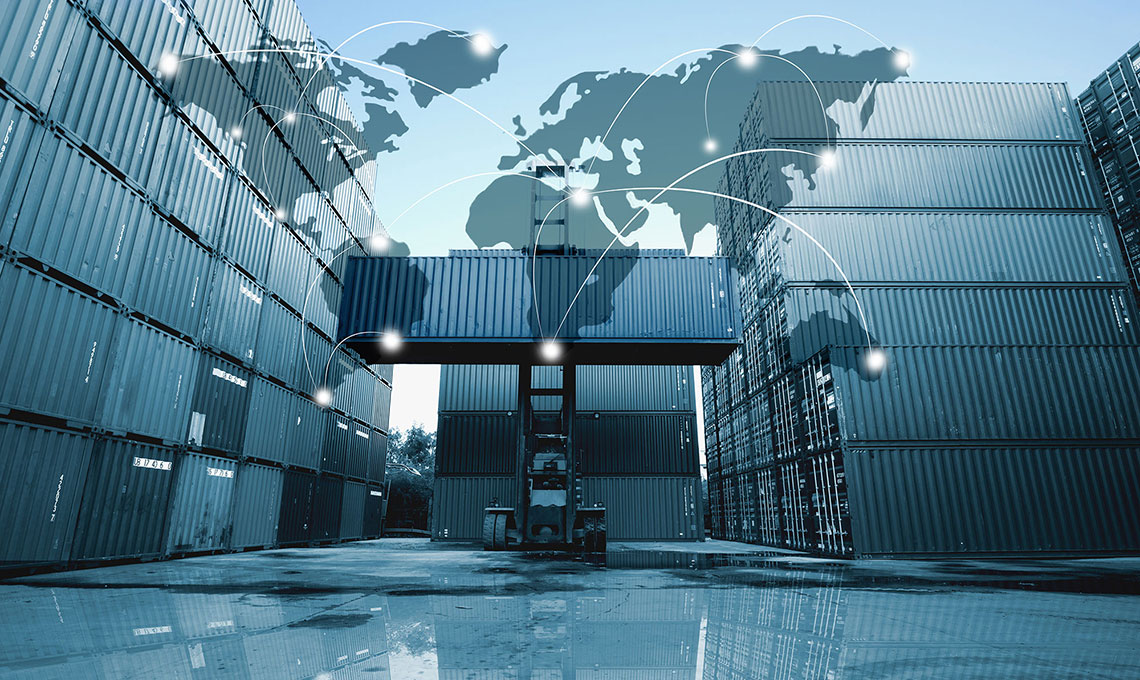Food Logistics Magazine — How Technology Will Assist the Fragile Cold Chain Transportation Network
Apr 05, 2022

News
Apr 05, 2022

Stakeholders across the globe say that the cold chain food delivery networks could be subject to critical dislocation challenges during 2022. The supply chain disruptions are far from over and will continue to have ensuing delivery delays with the fragility of the food supply networks being exacerbated by the Russian-Ukraine war situation. While many front-page stories are centered on commodity shortages linked to consumer product delays, cold boxes will be the hot topic as perishable commodity demand seasons accelerate and longer transits being a threat to successful shipment outcomes. One positive development from these supply chain pressure points is that technology advancements and interoperable data cooperation for digital solutions will assist in getting shippers through some of the 2022 headwinds.
Before the Coronavirus disease (COVID-19) pandemic, many people took the cold chain supply networks for granted. In fact, many people didn’t think of the cold chain logistics industry much until refrigerated foods were scant throughout many national grocery chains. The New York Times and the Wall Street Journal even admitted to not having a logistics front-page headline story before the pandemic.Today, the supply chain, and now the cold chain refrigerated container transport industry, is top of mind for all stakeholders. Most recently, there has been an acute heightened awareness of the Ukraine food supply chain given the pervasive supply of grain, fertilizer and other key commodities. These commodities make up significant cold chain dependencies for food sourcing, which will impact the entire global food chain arterial flows. While blockchain processes and adoption rates to cooperative data trust exchanges have been slower than originally anticipated, digital solutions in the refrigerated container supply chain are now accelerating, which will enable refrigerated shippers to outsource to more far-reaching regions. In fact, longer transits for refrigerated shipments will no longer be an impediment for successful delivery outcomes.
An efficient end-to-end cold chain requires a seamless exchange of data between stakeholders. During 2020, with the pandemic being the catalyst to expedite a solution, the Digital Container Shipping Association (DCSA) developed the Internet of Things (IoT) connectivity interface standards for shipping containers, both dry and reefer. This interoperability, coupled with the nascent refrigerated container telematics technology that supports refrigerated shipment remote machine setting controls, transparency and visibility, has been a breakthrough in efficient refrigerated shipment transport management. These standards will now allow shippers to manage more efficiently through the daily woes the supply chain has thrown at every cold chain logistician.
The advent of telematics technology has allowed ocean carriers and other transport providers to offer customers an uninterrupted flow of data. Specifically, all events in connection with the cargo–the exact location, temperature, humidity, air flow and condition–are now transparent and visible in real time. In addition, the technology today will enable operators to use predictive analytics with prescriptive data to allow for remote administration of machinery-setting adjustments, which will prevent failures.
As transit times become longer due to congestion delays and outsourced products being manufactured further from consumption as a result of environmental regional pressures, monitoring refrigerated cargo with controlled atmosphere technology has become increasingly important. Controlled atmosphere technology can slow the ripening and the respiration rates of fruits and vegetables that otherwise would be spoiled at delivery with any delays or extended transits. Controlled atmosphere containers use advanced technology by regulating carbon dioxide, oxygen and nitrogen levels. These technological controlled conditions inside a container help preserve perishable produce, significantly improving its shelf life, especially during long-distance trips, which is more common today given the supply chain disruption challenges.
The benefits of refrigerated container shipping and the importance of the cold chain has been exemplified throughout the COVID-19 pandemic, as the supply of essential goods, such as food and pharmaceuticals has remained a priority. Technology advancement in the areas of perishable commodity preservation will be considered a lifeline for many refrigerated container shipping customers— businesses and will be critical for the cargo flow in the cold chain supply networks. While the refrigerated container technology space for innovation and new technology will continue to evolve, the recent awareness of this critical food sourcing conveyance challenge will continue to attract more investors and capital, which should result in a rapid expansion in this emerging technology sphere.
Whether it’s through refrigerated transport monitoring, cold chain process automation, customer-centric cold chain digitization fulfillment strategies or refrigerated shipment predictive analytics, technology will continue to transform international refrigerated shipment transportation. With the supply chain taking the front and center position for all business owners, and with food source supply chain priorities being elevated given the Russia-Ukraine food supply issues, technology and digital transformation will be a top priority for the world.
As 2022 geopolitical events unfold and the need for digital transportation data exchange being a priority to move perishable cargo, we should soon find ourselves in a situation whereby adaptability and shipment outcomes are more predictable and reliable. Most importantly, and as a derivative of the advent of technology advancement in the refrigerated container space, food waste mitigation should improve, which is a huge step forward and a positive by-product of the technology advancement in this area.